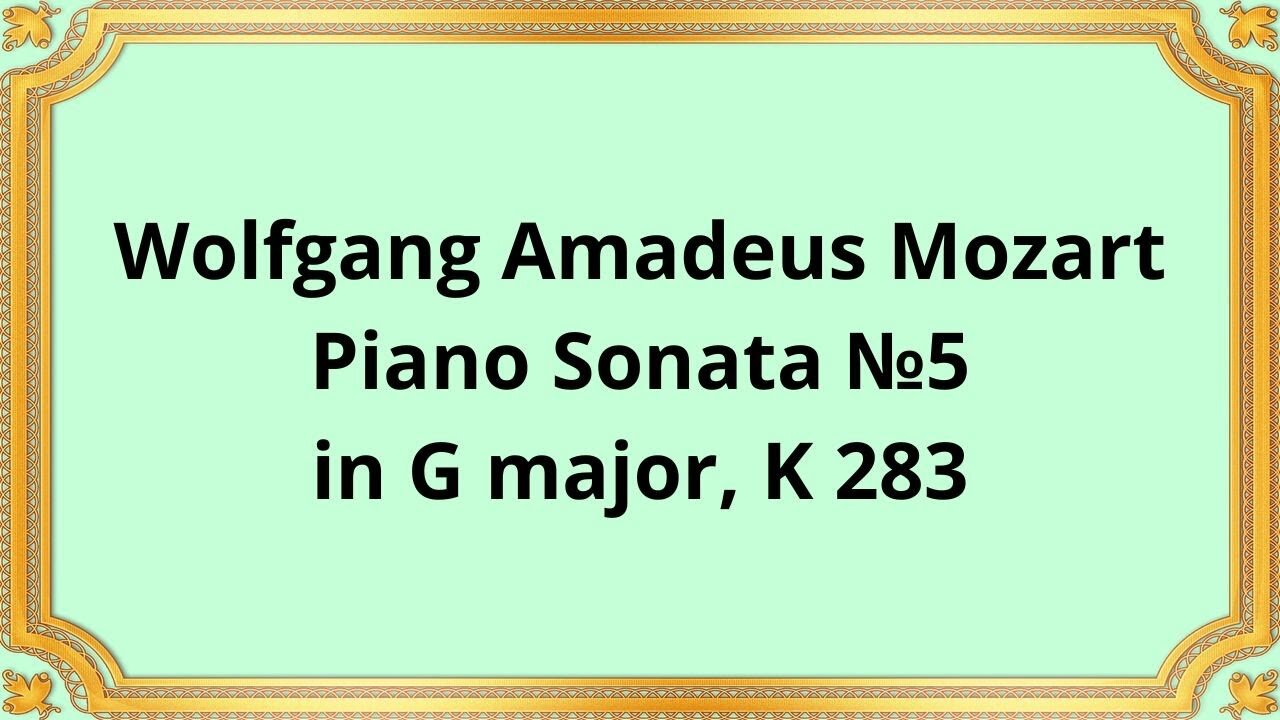Premium Only Content

Wolfgang Amadeus Mozart Piano Sonata №5 in G major, K 283
#Mozart#Chamber_music#Classical_music#Symphony#Musical_composition
Publication date 1938
I. Allegro
II. Andante
III. Presto
Kathleen Long (piano)
Wolfgang Amadeus Mozart's Piano Sonata No. 5 in G major, K 283, is a beautiful and iconic piece of classical music. It was composed by Mozart in 1774, during his tour of Italy, and was published in Vienna in 1784.
Mozart composed the Piano Sonata No. 5 in G major, K 283, in Milan, Italy, during his tour of the country. He was just 18 years old at the time and was already becoming known as a prodigy in the music world. The sonata was first published in Vienna, Austria, in 1784, along with several other piano sonatas.
The Piano Sonata No. 5 in G major, K 283, consists of three movements:
Allegro - This opening movement is in sonata form and is in the key of G major. It features a bright and lively melody that showcases Mozart's virtuosic piano writing. The movement is marked by sudden changes in tempo and dynamics, creating a sense of drama and excitement.
Andante - The second movement is a slow and melancholic andante in the key of E minor. It features a beautiful and expressive melody that highlights Mozart's skill at creating emotional depth through music. The movement is marked by the use of rubato, a technique where the performer takes liberties with the tempo to create a more expressive performance.
Presto - The final movement is a fast and energetic presto in the key of G major. It features a playful and intricate melody that showcases Mozart's technical mastery of the piano. The movement is marked by complex runs and trills that create a sense of excitement and exhilaration.
The Piano Sonata No. 5 in G major, K 283, is significant in that it showcases Mozart's early development as a composer. The sonata is notable for its technical brilliance and expressive melodies, which would become hallmarks of Mozart's later works. It also demonstrates Mozart's skill at creating musical contrasts, using sudden changes in tempo and dynamics to create a sense of drama and excitement.
The sonata is also significant in that it reflects the musical trends of the time. During Mozart's tour of Italy, he was exposed to the works of Italian composers such as Giovanni Battista Sammartini and Giovanni Paisiello, who were known for their expressive melodies and technical virtuosity. The Piano Sonata No. 5 in G major, K 283, shows how Mozart was influenced by these Italian composers while still developing his own unique style.
Conclusion
Wolfgang Amadeus Mozart's Piano Sonata No. 5 in G major, K 283, is a beautiful and significant work that showcases Mozart's early development as a composer. The sonata's expressive melodies, technical brilliance, and use of musical contrasts are hallmarks of Mozart's style and reflect the musical trends of the time. The sonata is a must-listen for anyone interested in classical music and is sure to delight and inspire.
-
 2:08:42
2:08:42
The Dilley Show
6 hours ago $28.05 earnedH1B Visa Debate, Culture and More! w/Author Brenden Dilley 12/26/2024
80.2K22 -
 4:55:59
4:55:59
LumpyPotatoX2
8 hours agoThirsty Thursday on BOX Day - #RumbleGaming
84.3K5 -
 1:04:52
1:04:52
Geeks + Gamers
7 hours agoDisney RATIO'D on Christmas Day | Mufasa Embarrassed By Sonic 3
62.8K4 -
 8:27:46
8:27:46
Sm0k3m
11 hours agoPlaying games on Rumble
38.2K2 -
 10:37
10:37
Russell Brand
2 days agoHow is this even allowed?
186K852 -
 1:37:26
1:37:26
Real Coffee With Scott Adams
7 hours agoEpisode 2701 CWSA 12/26/24
102K91 -
 2:58:58
2:58:58
Wendy Bell Radio
12 hours ago9 Steps Ahead
129K140 -
 2:03:46
2:03:46
LFA TV
21 hours agoTIME FOR A NEW SPEAKER! | LIVE FROM AMERICA 12.26.24 11am EST
77.7K51 -
 1:40:22
1:40:22
Game On!
18 hours ago $5.63 earnedNFL Thursday Night Football Seahawks at Bears EXPERT Picks!
56.3K9 -
 1:50:54
1:50:54
xBuRnTx
7 hours agoWho's Ready for New Years!
41.8K1